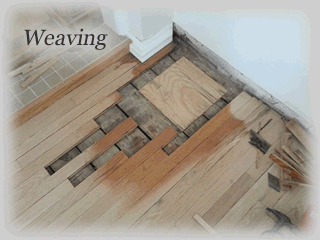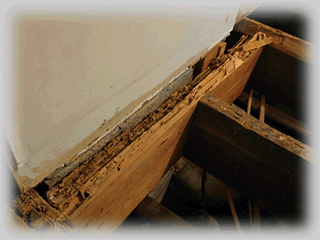
PATCHING VS WEAVING

There are 2 types of repairs. Patching, where we just fill in boards disregarding a long line of head joints, is the most inexpensive. Sometimes this is preferable when budget is a concern or the repair is in an inconspicuous area. Weaving is where head joints get cut further back in a random pattern, much like it would have been if it were originally installed that way. This method also enables flooring to extend into other rooms that didn’t have it to begin with when the wood runs through the doorway or opening.
SUB FLOOR AND FRAMING

We can also repair the sub floor or framing underneath the floor. Other trades have a nasty habit of just hacking their way through framing to run their plumbing or duct work, leading to an unsafe structural problem. Sometimes when you see a little bit of termite damage in the flooring this is usually an indication that the damage spreads further below the surface, sometimes extending to the joists. We have many years of experience rectifying these situations.


